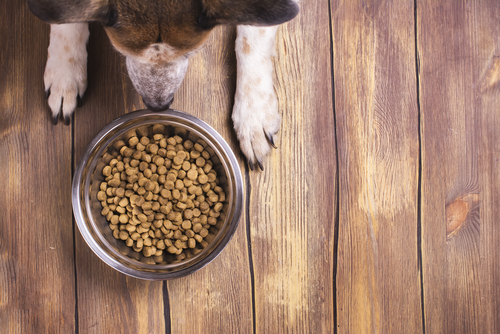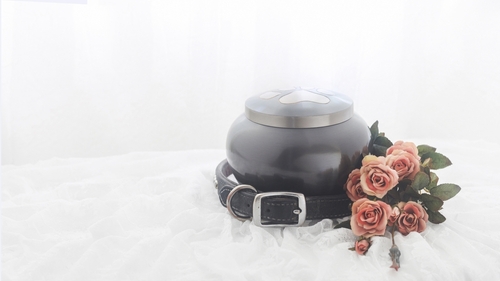
How To Identify Common Pet Illness
October 28, 2019
7 Weird Pet Allergies
October 28, 2019Wet Or Dry Dog Food

Many pet owners are faced with the dilemma whether wet or dry dog food is better for their best friend. TV and magazine advertisements, and the numerous dog food varieties available in the Singapore market aren’t helping at all! Then you’d have to make the choice between lamb or beef, tuna or turkey, among many other flavors.
Some people choose pet food based on previous experience with other dogs they have, some heed the advice of family members and friends, while some stick to vet recommendations. Deciding on the right food depends on your particular dog, his or her health and nutrition needs, and the pros and cons of the wet or dry type. First and foremost, you should go for quality, which surely does not come cheap. Your dog’s health is priceless and should not be compromised by poorly made dog foods with potentially harmful ingredients. Every responsible dog owner wants to give their most loved pooch only the highest quality food.
Wet Food Pros
Some dogs do not drink as much water as their body requires. Wet dog foods serve as a good source of hydration with significantly higher moisture content compared to kibble. If your furry friend is one that’s reluctant to drink, then wet food is the way to go so they can gain sufficient amounts of water for proper nourishment. Dogs with smaller mouths, poorly aligned jaws, or missing teeth will find wet foods easier to chew. Many dogs simply love it for wet foods closely resemble sumptuous meaty meals.
A number of pet health considerations make wet foods the most practical choice. Dogs who are sick or have urinary tract infection will receive enough water their system needs. Those who have decreased appetite would find this type of food more enticing due to its richer scent, and being a tastier-looking dish. Older dogs with their olfactory senses affected by the aging process will be more inclined to eat flavourful wet food varieties. Younger, playful and active dogs may require a protein boost to keep them energetic and help build muscle during their development. Eating wet food ensures that your pup or dog gets all the vitamins and minerals they need for optimal health.
Wet Food Cons
Feeding wet food to your dog has its drawbacks. It tends to be messy and thus entails immediate follow-up cleaning after meals. Dogs prone to teeth problems must be given greater attention to dental care. Wet food can quickly lose its shelf life and must be consumed right away, or covered and refrigerated to keep from spoiling. There are a myriad of wet food products and most of the brands cannot be deemed economical, for they are often more expensive than dry food. You would have to store a number of canned foods at home if you choose to give it on a regular basis since they arrive in smaller servings than hugely packed dry dog foods.
Dry Dog Food Pros
Dry food is quite convenient for both feeding and storing. If you’re after consistency in your pet’s diet, dry food is the best choice. Kibble is pretty easy to measure out, allowing you to serve accurate portions for every meal. Dry food can be easily stored as well with a longer shelf life, letting you purchase in bulk and keep it fresh in storage until before the expiration date. Little waste means big savings. What’s more, dry food are less expensive in general compared to wet foods. It’s definitely cost-effective and the most practical choice when feeding multiple pets.
Food can be left out on a bowl without worry of spoilage, which likewise grants dogs the freedom to eat at their own pace. Some dry food products are specially formulated and designed to clean dog’s teeth while they eat, helping you effortlessly give your pet utmost oral care. There are dog breeds that are prone to teeth and gum problems, and dry food helps avoid dental issues altogether. Not only does it aid as an effective dental health supplement, but also works best as yummy treats for training purposes.
Frequent travellers and those often on-the-go will find dry food favourable to bring along. Otherwise, dogs left at home will have enough food to last for a few hours or even days. This gives owners peace of mind that their loyal family member has food to eat while they are on a trip and away from home. A large plastic bin that closes off with a tight lid will keep the food fresh and safe from rodents or insects while giving your dog ample supply whenever he or she gets hungry.
Dry Dog Food Cons
Dry dog foods provide convenience to many pet owners along with all the great benefits it brings. However, dogs with compromised or damaged teeth may find it hard to chew or even painful to bite on kibble. Some dogs have a facial structure or other conditions that make it difficult to break up kibble. Most dry dog food products have reduced fat content and increased carbohydrate content to maintain its shape. Active dogs may need higher amounts to meet their daily needs. Dry food also does not provide lots of moisture like wet foods do, which becomes essential with an aging animal, an ill dog, and caring for a pet in dry and hot climates.
Which Is Better?
Now that you are aware of the advantages and disadvantages of wet dog foods and dry dog foods, the big question lies as to which one is best for your dog. There’s no straightforward answer, mainly because every dog is unique and should be give food tailored to his or her needs, based on breed, age, and other important factors. There are times when feeding one or the other



